iPhone 8 and iPhone 8 Plus review
The iPhone 8 remains a good value for those who want iOS on the cheap
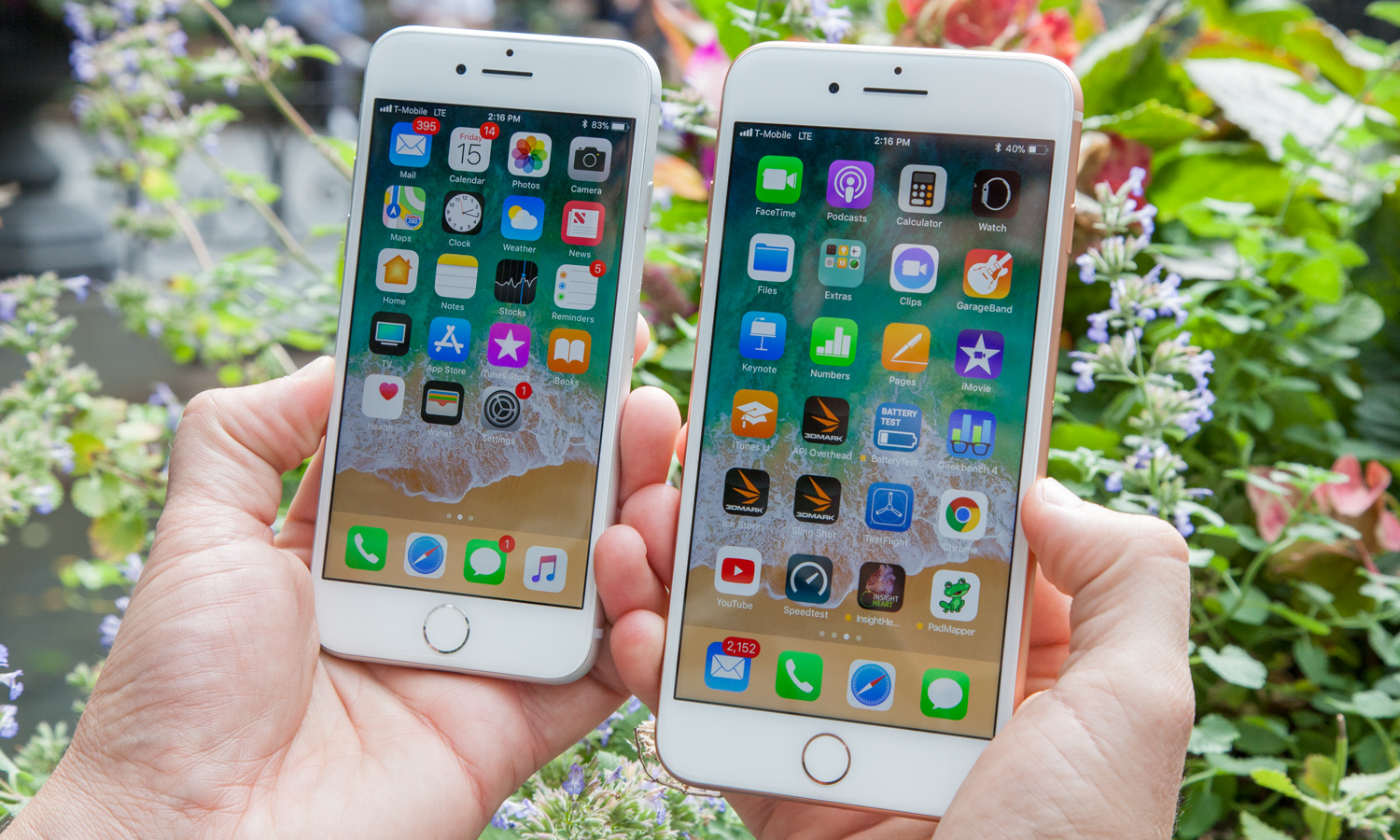
The iPhone 8 and iPhone 8 Plus aren’t mere consolation prizes to Apple’s pricier flagships. They pack a ton of good features, including blazing fast processors, solid cameras and wireless charging. And because of they're relatively low prices, they're still some of the best phones you can buy today.
Starting at $449 and $549, respectively, the iPhone 8 and 8 Plus are also considerably more affordable than the iPhone 11. Between the iPhone 8 and iPhone 8 Plus, our top pick remains the Plus because of its larger screen, longer battery life and more versatile dual cameras. However, the iPhone 8 remains one of the best small phones on the market, and an excellent choice for one of the best used smartphones, given how it's gone down in price over the years.
iPhone 8 and iPhone 8 Plus review: Design
I’m torn about the look of the new iPhones. On the one hand, the new glass back looks elegant while being less slippery than my matte black iPhone 7 Plus. Apple’s new phones are also built stronger, with the company claiming that the iPhone 8 and 8 Plus boast the most durable glass ever on a smartphone. This is due in part to a deeper strengthening layer. (More on that in a moment.)
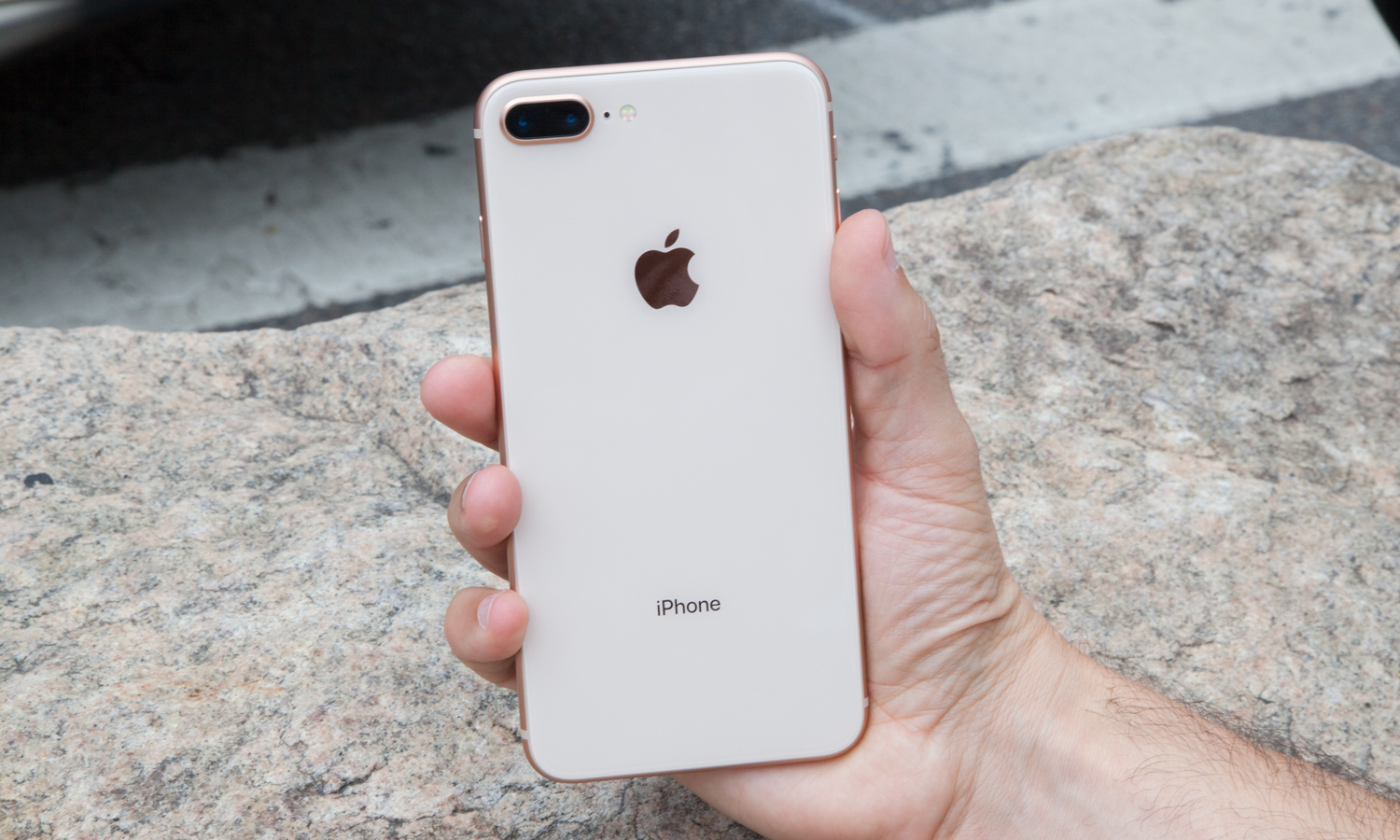
On the other hand, seeing bezels this large on a late-2017 phone above and below the display seems dated compared not just with the iPhone X but also the Galaxy S8 and other Android phones that are going the edge-to-edge route. My complaint isn’t just about aesthetics; having smaller bezels makes it easier to use a phone with one hand and fit it in a front pocket.
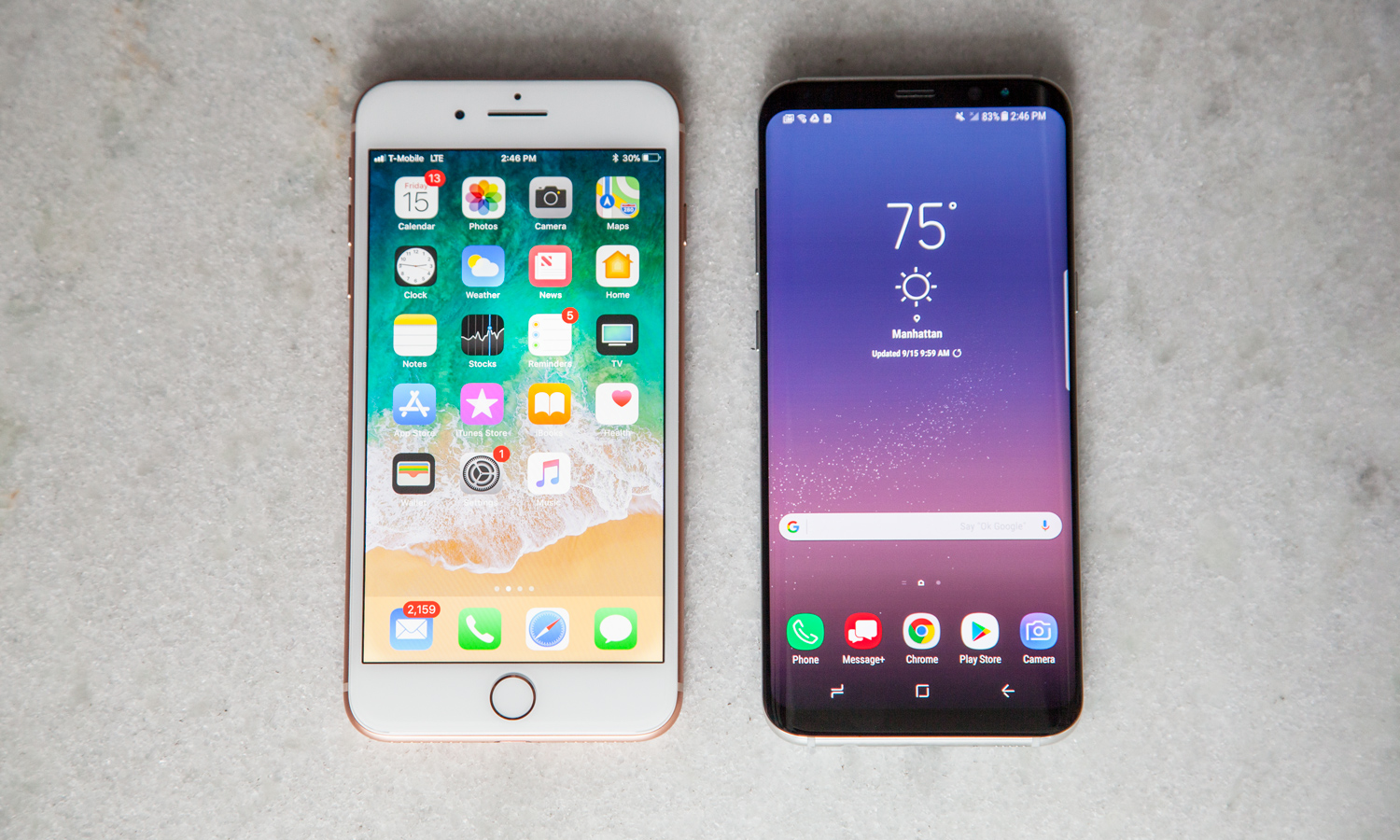
I do like how the strong 7000 series aluminum band on the iPhone 8 is color matched with the pearlescent rear. On the gold iPhone 8 Plus I tested, the back looks like a true rose gold and less pink than previous model. I also tested the silver iPhone 8, whose back is a less exciting gray. The new iPhones are also available in Space Gray.
For us minimalists, there’s no small type saying where this device was assembled or its model number beneath the word iPhone. Now, it just says iPhone.
Measuring 5.5 x 2.7 x 0.29 inches and weighing 5.2 ounces, the iPhone 8 is a bit heavier and a smidge thicker than the iPhone 7 (5.4 x 2.6 x 0.28 inches, 4.9 ounces), but I barely noticed the difference. I’m guessing the extra girth comes from adding the wireless-charging capability and reinforced glass back. The iPhone 8 Plus (7.1 ounces, 0.3 inches thick) sees a similar small bump up versus the iPhone 7 Plus (6.6 ounces, 0.29 inches).
Get instant access to breaking news, the hottest reviews, great deals and helpful tips.
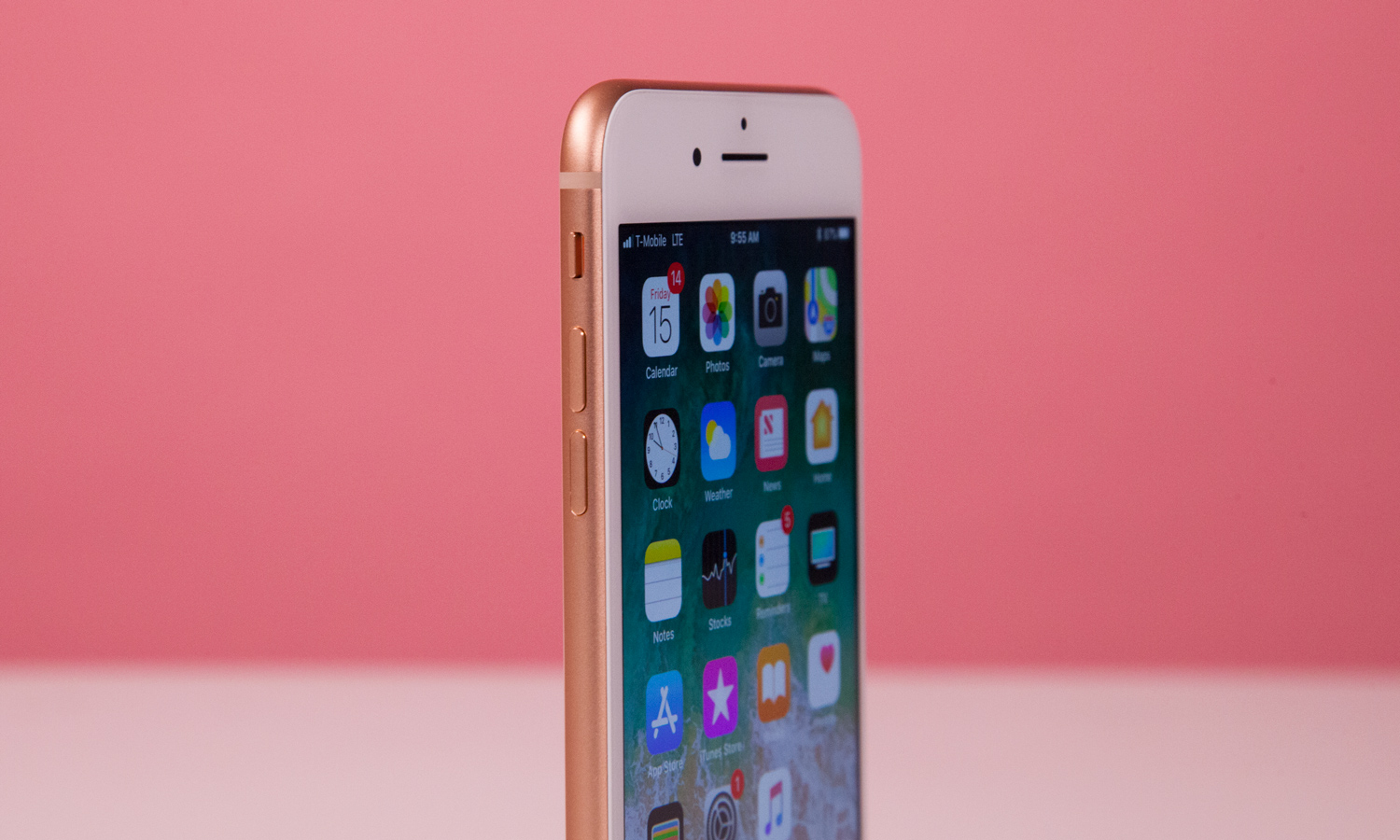
While the iPhone 8 and 8 Plus still lack a headphone jack, music lovers will appreciate that they sound better sans headphones, thanks to stereo speakers that are now 25 percent louder. When I streamed “An Honest Mistake” by The Bravery, I noticed deeper bass and more natural-sounding vocals on the iPhone 8 versus the iPhone 7 Plus.
iPhone 8 and iPhone 8 Plus review: Durability
We tested the toughness of the iPhone 8 by dropping it on its face onto wood from a height of 4 feet and 6 feet; we then dropped it on its edge and face onto concrete from 4 feet; we then dropped it on its edge and face from 6 feet onto concrete.
The iPhone 8 survived drops from 4 and 6 feet onto wood without incurring any damage. A 4-foot drop on its edge onto concrete caused a minor crack and scratching along the bottom, which grew larger with a face drop from 4 feet onto concrete.
Apple's phone lasted all the way up to a 6-foot face drop onto concrete, when its screen stopped working. The result of this testing was that the iPhone 8 achieved an okay toughness score of 4.9 out of 10. To see the results of other smartphones, as well as our complete scoring methodology, check out our smartphone drop tests.
iPhone 8 and iPhone 8 Plus review: Specs
| iPhone 8 | iPhone 8 Plus | |
| Price | $699, $849 | $799, $949 |
| CPU | A11 Bionic | A11 Bionic |
| Capacity | 64, 256 GB | 64, 256 GB |
| Rear Camera | 12-MP | Dual 12-MP (f/1.8, f/2.8) |
| Front Camera | 7-MP FaceTime HD | 7-MP FaceTime HD |
| Unlocking Method | Touch ID | Touch ID |
| Colors | Space Gray, Silver, Gold | Space Gray, Silver, Gold |
| Screen Size (Resolution) | 4.7-inches (1334 X 750) | 5.5-inches (1920 X 1080) |
| Size | 5.5 x 2.7 x 0.29 inches | 6.2 x 3.1 x 0.3 inches |
| Weight | 5.22 ounces | 7.13 ounces |
iPhone 8 and iPhone 8 Plus review: Performance
If ever there was an apt name for a processor, A11 Bionic is it. This chip absolutely smokes every Android phone on the planet. The A11 Bionic is a six-core CPU, with two performance cores that promise a 25 percent boost in performance over the A10, and four high-efficiency cores that promise up to a 70 percent improvement. Last but not least is an Apple-designed GPU that’s supposed to be 30 percent faster.
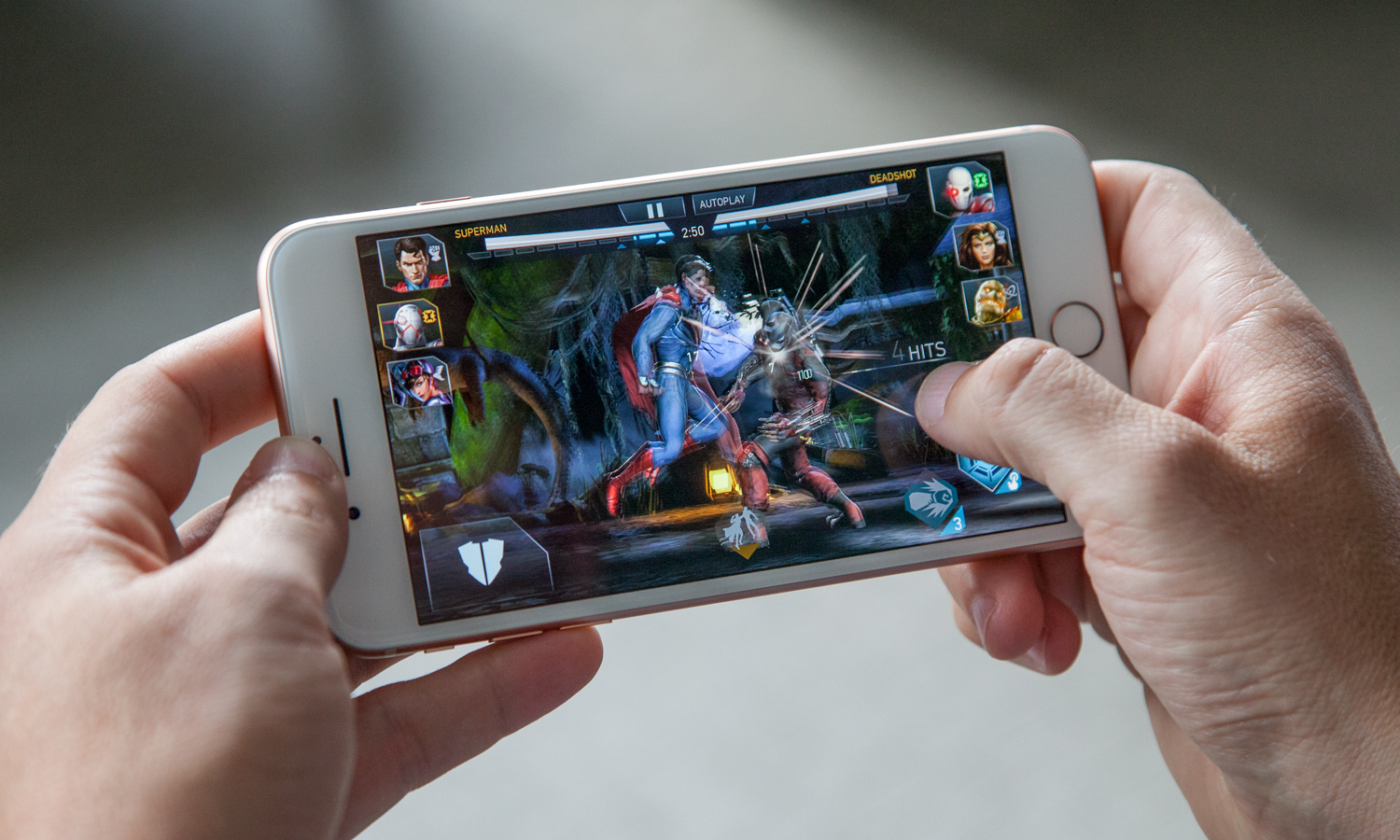
On Geekbench 4, which measures overall performance, the iPhone 8 was in another league, turning in a multicore score of 10,170. The iPhone 8 Plus was a bit faster at 10,472. The Galaxy Note 8, complete with Qualcomm’s Snapdragon 835 chip and 6GB of RAM, scored 6,564. That means the iPhone 8 is a whopping 54 percent faster than the fastest Android flagship.
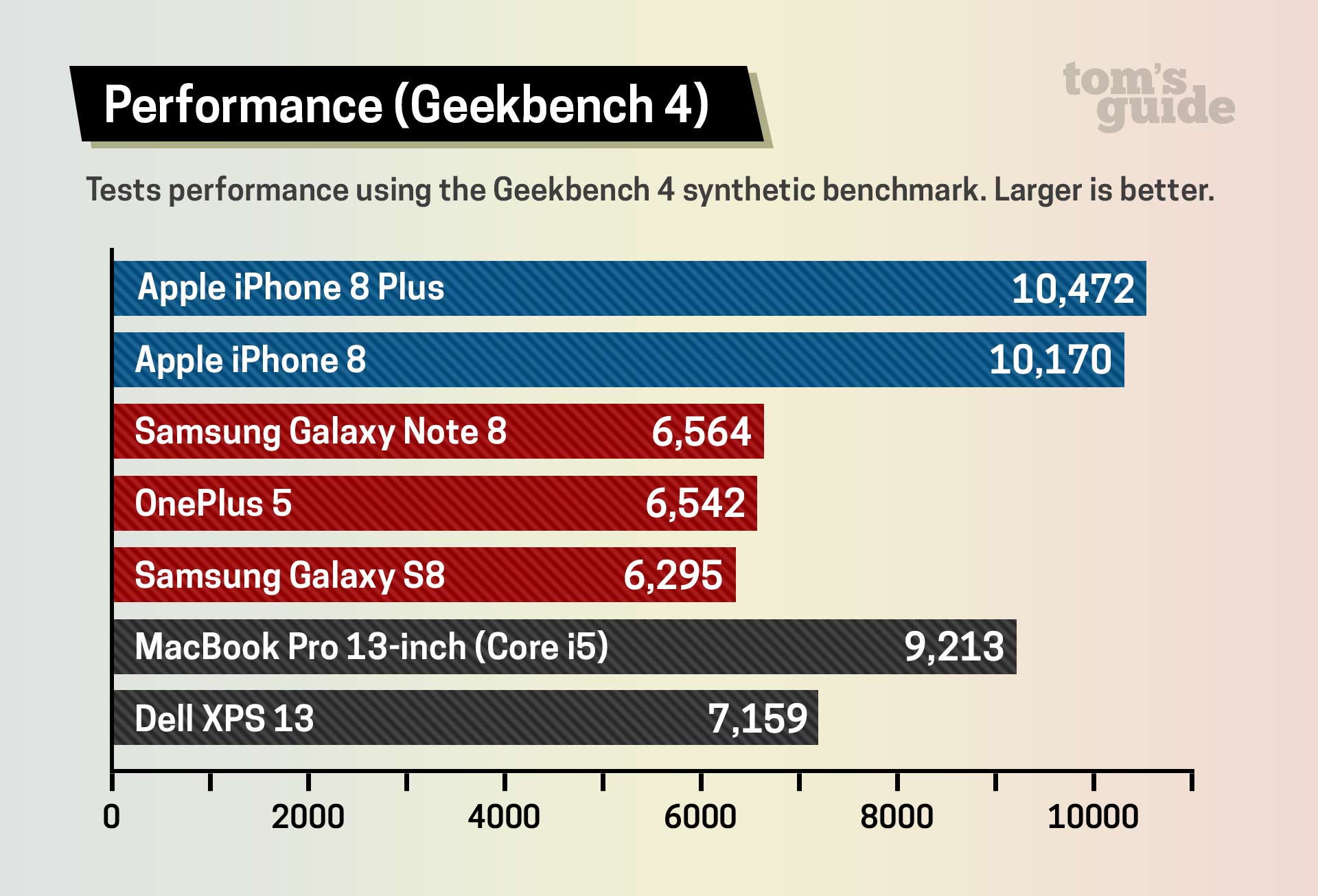
To put those numbers in perspective, the iPhone 8 also beats the 7th-generation Core i5 MacBook by a tad, which turned in 9,213 on Geekbench 4. The Dell XPS 13, our favorite Windows laptop, hit 7,159. For more on one these comparisons mean, see our in-depth article on the iPhone 8's performance.
There was an even bigger performance gap on 3DMark Ice Storm Unlimited, which measures graphics performance. The iPhone 8 and iPhone 8 Plus notched 62,352 and 64,412, respectively, compared with 39,834 for the Note 8. So Apple’s handsets pack about 63 percent more graphics might.
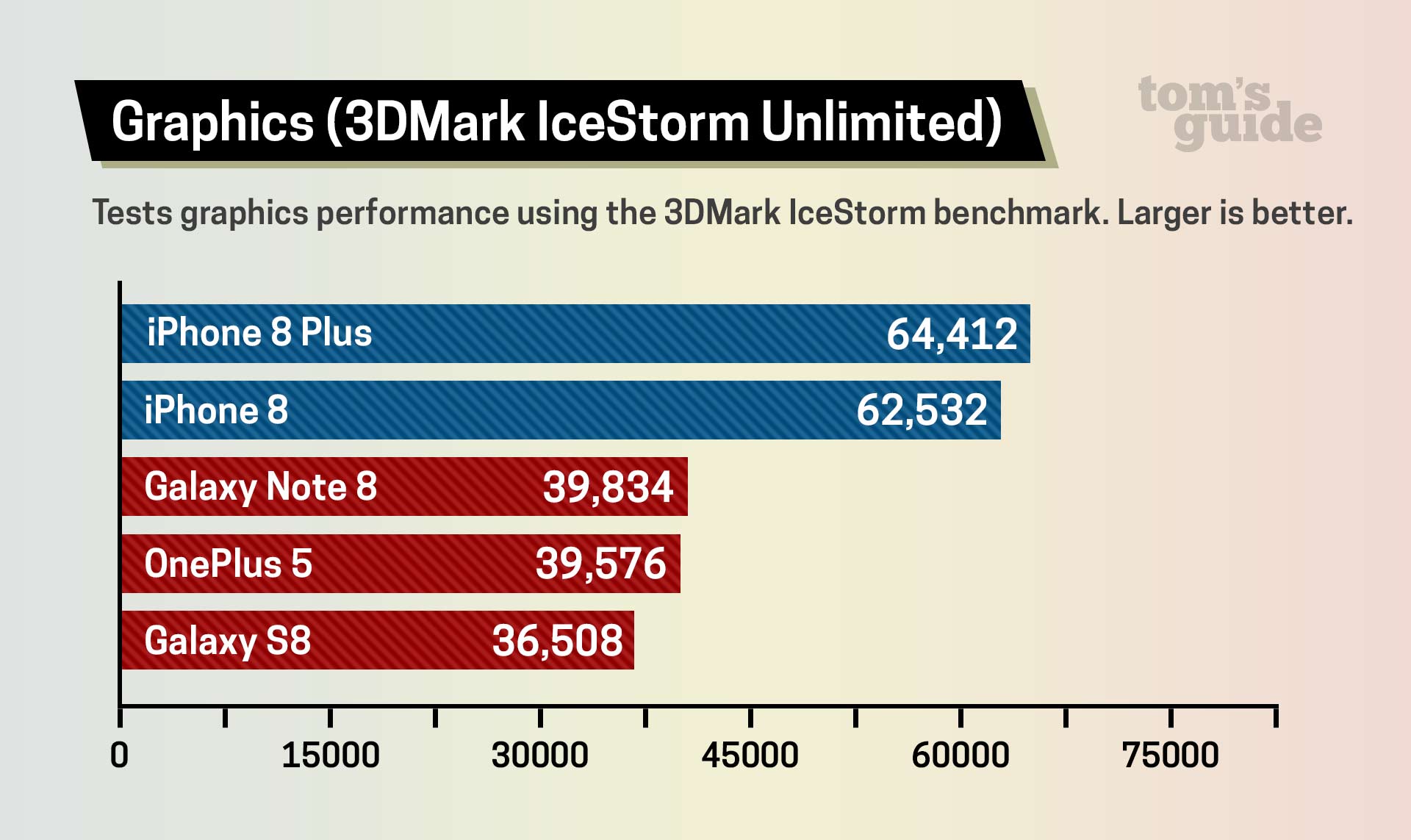
What about real-world performance? We edited and exported the same 2-minute 4K video clip on the iPhone 8, Galaxy Note 8 and Galaxy S8 using the Adobe Premiere Clip app, and it wasn’t even close. The iPhone 8 finished the task in 42 seconds, compared with more than 3 minutes for the Galaxy Note 8 and more than 4 minutes for the Galaxy S8+.

The iPhone 8 also opened larger apps faster than both its predecessor and the top Android phone right now. It took the handset 11 seconds to fully load the Injustice 2 game, compared with 14.53 seconds for the iPhone 7 Plus and 19 seconds for the Note 8.
For more results, including opening a large file, check out our in-depth iPhone 8 speed tests.
iPhone 8 and iPhone 8 Plus review: Cameras
With a bigger and faster sensor, the 12-megapixel camera on the iPhone 8 and iPhone 8 Plus takes some of the best-looking photos I’ve seen from a phone. In fact, some shots I took outshone the stellar Galaxy Note 8, which was previously rated our best camera phone. Now the iPhone 8 Plus is in the top spot, and you can check out our camera face-off with the Note 8 to see the results for yourself.

Take this photo of colorful flowers near Madison Square Park. The leaves’ edges on the iPhone 8 shot have a subtle orange toward the tip and more sharpness overall, while the Note 8’s photo isn’t as well defined and misses some of the gradation in hues.
In low light, the iPhone 8 and Note 8 were dead even regarding detail, but the iPhone 8 produced more natural-looking colors with this group of toys. Furby in particular has the right pink, and the Tygra figure in the iPhone 8 shot is less blurry.
The iPhone did a better job overall with this tricky image of the Flatiron Building, as the flower in the foreground is sharper and the blue sky and clouds look realistic. On the Note 8, the sky got blown out, but the building itself pops more because it’s brighter.
But the Note 8 fought back in another shot of a fountain; while the iPhone 8 offered more detail when zoomed in, Samsung’s image made the leaves look brighter in the surrounding trees.
Just as with the iPhone 7 Plus, the iPhone 8 Plus offers a true 2x optical zoom via its second telephoto lens, but now you can have a lot more fun with portraits. Portrait Mode stil artfully blurs out the background with the so-called bokeh effect — and it looks a little more natural now — while a new Portrait Lighting feature (in beta) lets you adjust the lighting of your shots before and after you shoot with several effects.
I took some portrait photos of my colleague Caitlin, and I was very impressed with the subtle but powerful changes Portrait Lighting can make to a photo. When I switched from Natural to Studio light, Caitlin’s face became brighter without blowing out the shadows. The Contour setting introduced more contrast and shadows, which is kind of like adding makeup.

The Studio Light feature is the most ambitious effect, as it strips out the existing background and makes it totally black. And, if you want something even more dramatic, you can go for black and white with Stage Light Mono.
However, the Stage Light effect could be hit or miss; you need to get in pretty close to the person’s face to get the best results, and long hair can look a bit unnatural when it gets cut off and put on black. In addition, I noticed that this effect took longer to process than the others. To be fair, Portrait Lighting is in beta and could improve via software updates.
The iPhone 8 Plus doesn’t have all the fun. There are new Live Photo effects in iOS 11 that work with both new Apple handsets. Loop replays the action, while the even cooler Bounce plays the motion backward and forward, as seen in this jump by my colleague Kenneth.
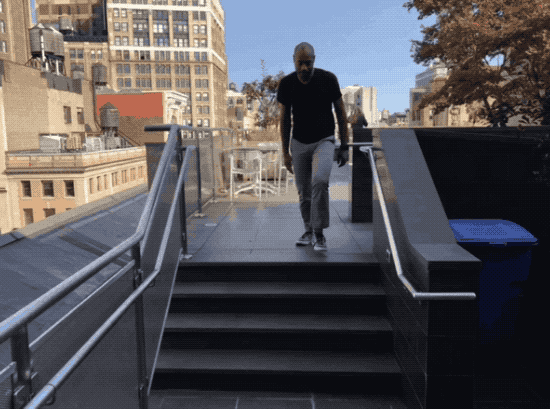
The Note 8 still has one key advantage over the iPhone 8 Plus in that both of the dual lenses on Samsung’s phone have optical image stabilization, which means better low-light performance when zooming and steadier footage when shooting video. The iPhone X will have OIS on both lenses.
iPhone 8 and iPhone 8 Plus review: Video
The iPhone 8 and 8 Plus both step up their video game, as they now record 4K resolution video at up to 60 frames per second (up from 30 fps before), and you can now capture slo-motion footage at a super-slow 240 fps without sacrificing sharpness, as it’s in 1080p. Other phones like the Note 8 and Galaxy S8 are stuck at 720p. The Sony Xperia XZ Premium shoots at a much slower 960 fps, but that’s also at 720p.
To evaluate the 4K capabilities, I shot some footage at Bryant Park in New York City, and I could make out nearly every crook and cranny in a water fountain, including the angry stone faces spitting out the water. The iPhone 8 also had no problem rendering multiple birds as they flew by without distortion. I could even see the fine mist from the fountain as I panned to the right toward the sun.
I’m a sucker for slow-mo dog footage, so I turned the iPhone 8 Plus on my golden retriever to see how it could handle him retrieving a tennis ball. The grass could look a little crisper, but it was still pretty cool to see his fur swaying and jowls bouncing as he ran toward me.
iPhone 8 and iPhone 8 Plus review: Augmented reality
Thanks to iOS 11, you can enjoy augmented-reality apps using Apple’s ARKit technology on any phone running the software with an A9 or newer chip. So that means even the iPhone SE and older iPhone 6s can use a growing number of truly immersive apps that employ the camera’s live view and overlay anything on top, from games and home furnishings to educational content.
But the iPhone 8 and iPhone 8 Plus (as well as the upcoming iPhone X) have been especially optimized for AR via the A11 Bionic chip, calibrated cameras and a new gyroscope and accelerometer. I tried out a few apps and came away impressed, but I was also left wanting more, as there’s not a ton of options — yet.

What is available shows off ARKit’s potential. The InsightHeart app, for example, displays the wireframe of a human in front of you along with his heart. You then you can learn about this very important organ by getting in really close and looking at it from multiple angles.
I can see a lot of people using the Ikea app to figure out how furniture looks in their abode before they buy. I replaced the desk in my home office with a white Micke desk and added a chaise from the Soderhamn collection. The iPhone 8 did a pretty good job scanning the room even without much light, though the furniture itself looked more like animations than the real thing.
The Thomas & Friends Minis app is something I wish I had when my kids were younger. You can build your own train tracks right on the table in front of you. I felt like a kid again when the train jumped in the air off one of the ramps and flipped right in front of me. You can even walk around the virtual track to take in different views. It’s pretty amazing.

Other ARKit apps are on the way, including an MLB app that will show you a live view of who’s on what base when you’re at the game, along with key player stats. And I’m really looking forward to Warhammer 40K Freeblade, a robot-fighting game. I spent a bit of time with The Machines, a real-time multiplayer strategy game, and I was impressed not just with the graphics but how the sound intensified as I got closer to the action.
What I’d like to see is a dedicated section in the App Store for AR experiences, which I’m guessing is on the horizon, given the overhaul of the App Store that iOS 11 has introduced.
iPhone 8 and iPhone 8 Plus review: Displays
Given that the iPhone X boasts a beautiful 5.8-inch OLED display with 2436 x 1125 pixels, and the Galaxy S8 and S8 Plus sport 5.8 and 6.2-inch quad OLED screens, there’s no question that the LCDs on the iPhone 8 and iPhone 8 Plus are a step behind. They just don’t have the sharpness, wide viewing angles and perfect blacks the OLED competition has.
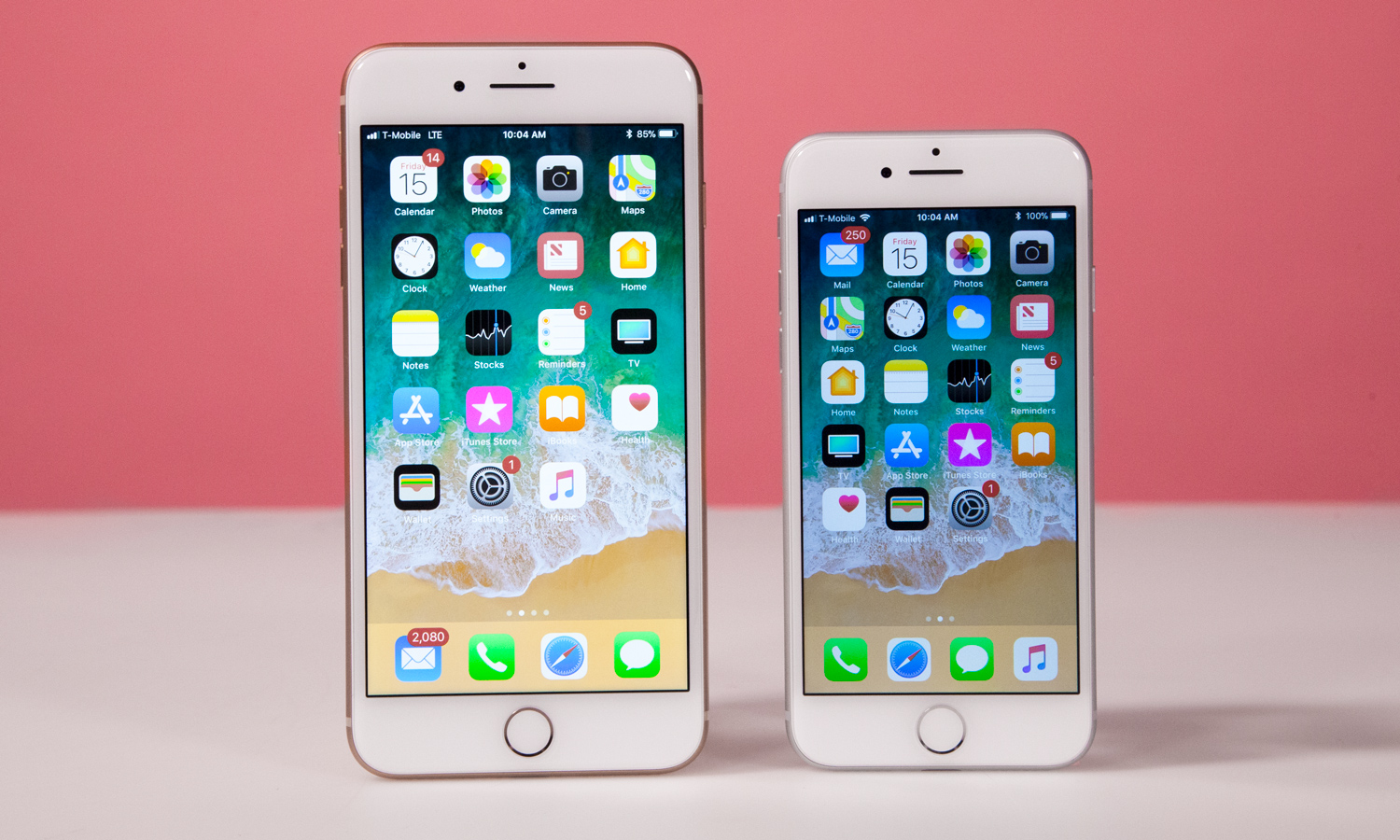
Nevertheless, Apple has made some improvements to the 5.5-inch, 1920 x 1080 screen on the iPhone 8 Plus and the almost-puny-by-modern-standards 4.7-inch, 1334 x 750 panel on the iPhone 8.
For starters, the True Tone feature has migrated from the iPad to the iPhone, which automatically adjusts the white balance on the display to match the ambient light. This can reduce eye strain. The two LCDs also benefit from a wide color gamut, as evidenced when I compared a photo of a lake; a gray house looked more white on the iPhone 7 Plus’ screen, and greens looked more lush on the iPhone 8 Plus.
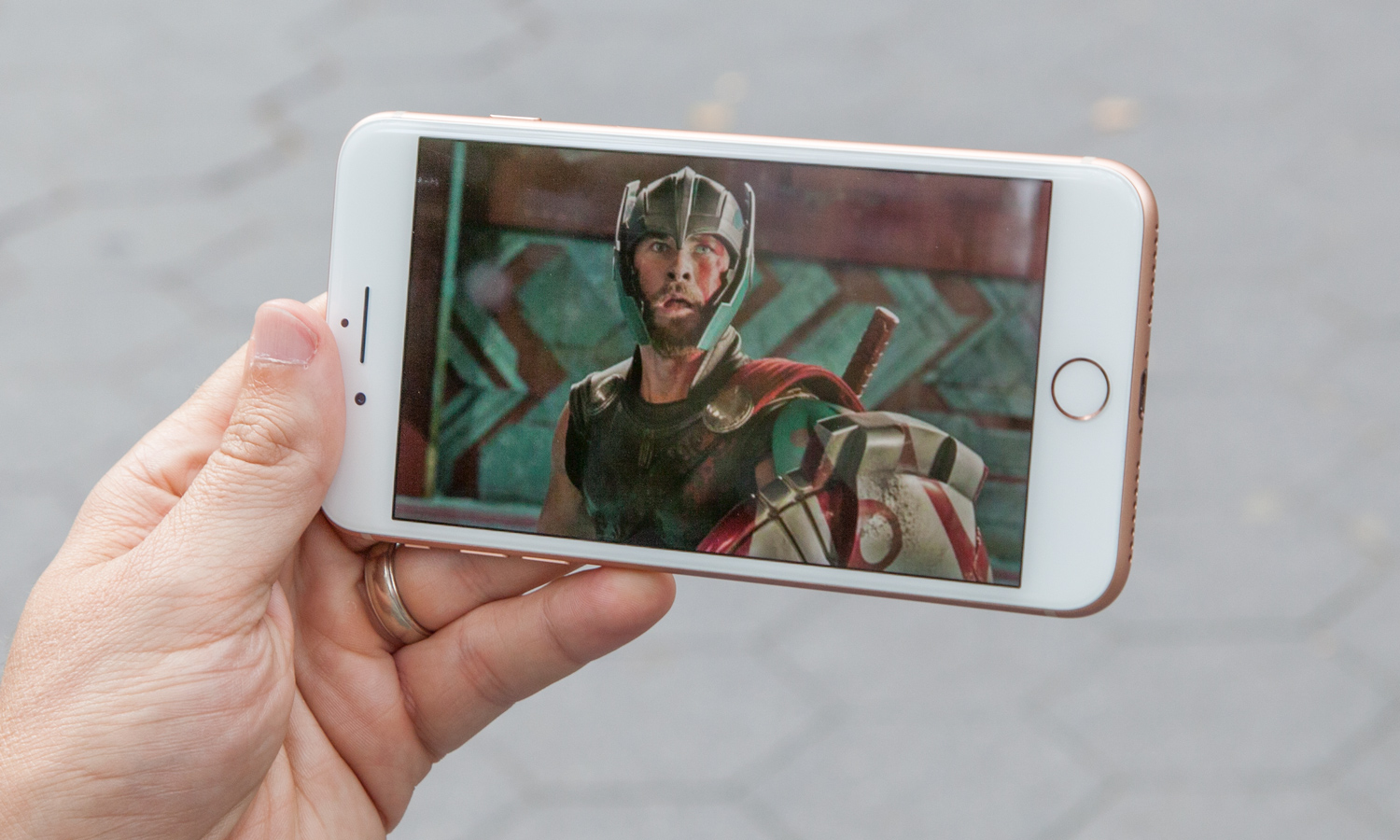
On our lab tests, the iPhone 8 and 8 Plus delivered a very good 119.6 percent and 122.5 percent of the color gamut. That’s great for an LCD, but trails OLED phones like the Note 8 (204 percent) and the Galaxy S8 (183 percent).
Apple’s phones do offer very accurate hues, though, as they turned in a Delta-E accuracy ratings of 0.89 and 0.25 (0 is perfect). Samsung’s OLED handsets do well here, too, as the Galaxy S8 scored 0.28 and the Note 8 0.5.
iPhone 8 and iPhone 8 Plus review: Battery life
Despite the serious speed boost, both the iPhone 8 and the iPhone 8 Plus offer slightly longer endurance than their predecessors — noteworthy since Apple was only promising similar battery life to the iPhone 7 and 7 Plus with its new phones.

On the Tom’s Guide Battery Test, which involves continuous web surfing over 4G LTE (in this case T-Mobile), the iPhone 8 lasted 9 hours and 54 minutes, which is slightly above the 9:40 smartphone average. The Galaxy S8, by comparison, turned in a longer runtime of 10:39. Last year’s iPhone 7 hit 9:03.
The iPhone 8 Plus lasted an even better 11 hours and 16 minutes, which will put it on our list of longest-lasting phones and also puts it on a par with the Galaxy Note 8 (11:11). The Galaxy S8+ was in the same ballpark at 11:04, while the older iPhone 7 Plus lasted 10:35.
iPhone 8 and iPhone 8 Plus review: Wireless charging
The good news is that the iPhone 8 and iPhone 8 finally support wireless charging, and they should work with any charging pad that supports the Qi standard. When using Belkin’s $59 Boost Up pad, I found that the iPhone 8 Plus charged at about the same pace as when connected via Lightning cable.
In the case of this Belkin and the similarly priced Mophie Charging Base, both will support faster wireless charging at 7 watts once Apple rolls out an update later this year. They’re currently outputting 5 watts, which is the same as the standard Lightning wired charger.

The iPhone 8 and iPhone 8 Plus are capable of reaching 50 percent charge in just 30 minutes over a wired connection, but only if you invest in additional gear. You’ll need to spring for a 29-watt USB-C power adapter ($49) and a USB-C to Lightning cable ($15 to $25). That’s pretty crappy given that phones like the Galaxy S8 come with a fast wired charging adapter and cable in the box.
iPhone 8 and iPhone 8 Plus review: Software
In day-to-day use with the iPhone 8, I’d say the biggest changes you’ll notice in iOS 11 will be the new Control Center, Live Photo effects in the camera and a more immersive App Store. Siri also has a more natural-sounding voice.
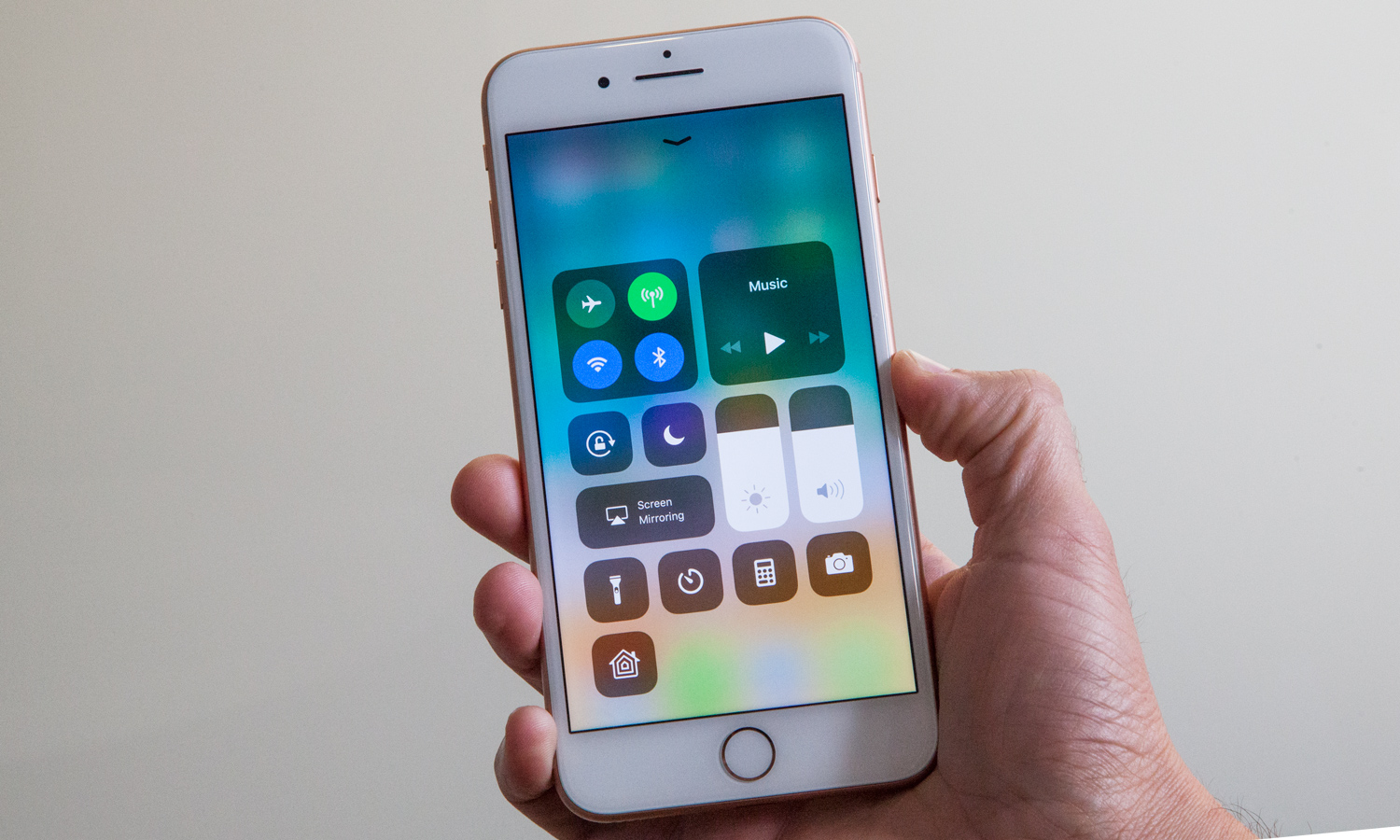
Control Center is now easier to use because it crams more controls into a smaller space. For instance, the wireless controls and music controls are now on the same screen. When you long-press on one of the controls, you’ll see additional options, such as Night Shift and True Tone for brightness. However, I’m still waiting for Apple to make it easier to change Wi-Fi networks by long-pressing the Wi-Fi icon.
If you want to discover new apps, and you’re tired of scrolling through top lists, the new App Store will be a breath of fresh air. You can see spotlight stories on specific apps, and there’s a redesigned Games section that makes it easier to discover new titles in multiple genres.
iPhone 8 and iPhone 8 Plus review: Verdict
The $699 iPhone 8 and $799 iPhone 8 Plus represent a leap forward in performance and camera quality, but I wish they came in packages that looked and felt more “new.” That’s why I’m personally waiting for the $999 iPhone X, which also adds Face ID and a more colorful OLED screen. Still, both iPhones 8 have very good LCD screens, better sound than their prededessors, wireless charging and strong battery life — and for more accessible prices, to boot.
If you’re into Android, Samsung doesn’t make you choose between getting a cutting-edge design and spending close to a grand. The $750 Galaxy S8 and $850 S8+ deliver great cameras and edge-to-edge OLED screens for just a bit more than the iPhone 8 and 8 Plus. However, neither Galaxy phone can touch the performance of the iPhone 8, and I expect them to trail Apple on the augmented-reality app front. Want dual cameras? You’ll have to spend $930 and up for the Note 8, which approaches iPhone X territory.
Overall, my pick between the two new iPhones is the iPhone 8 Plus. It gives you a significantly bigger screen than the iPhone 8, longer battery life and more versatile dual cameras for just $100 more. The regular iPhone 8 is good, but 4.7 inches just doesn’t cut it for me anymore.
Credit: Shaun Lucas/Tom's Guide
Mark Spoonauer is the global editor in chief of Tom's Guide and has covered technology for over 20 years. In addition to overseeing the direction of Tom's Guide, Mark specializes in covering all things mobile, having reviewed dozens of smartphones and other gadgets. He has spoken at key industry events and appears regularly on TV to discuss the latest trends, including Cheddar, Fox Business and other outlets. Mark was previously editor in chief of Laptop Mag, and his work has appeared in Wired, Popular Science and Inc. Follow him on Twitter at @mspoonauer.
-
s4f786 in regards to the benchmarks, people fail to mention that these are run on different platforms (ios/android/windows) so a direct comparison cannot truly be made.Reply -
Actually, that's not true. I spoke directly with the head of Geekbench, and he said that comparisons across platforms can be made. However, Geekbench measures burst speed as opposed to sustained speed over a long period of time.Reply
In terms of the video editing test, we purposely chose a cross-platform app in Adobe Premiere Clip and used a video shot with a third-party device.
20188811 said:in regards to the benchmarks, people fail to mention that these are run on different platforms (ios/android/windows) so a direct comparison cannot truly be made.
-
carl_diaz Gee for $800 you can have a phone that is one onemillionth faster than it's previous model, spend $50 to $90 dollars for a charger, get some cosmetics changes in the case.Reply
Now I ask you, who wouldn't spend almost a grand for ALL that stuff especially with the "X" coming out on it's heels in a month or so .... I have a 7 plus, I think I'll wait to next year until all the bugs are worked out .. Thanks Apple but no thanks ... -
menno.pieter.visser Design as an argument?Reply
I think it strange a strange statement. Would a car magazine that tests the new Porsche 911 with double the power, a smaller fuel tank but with the same range and the complaining that the design hasn't change really

